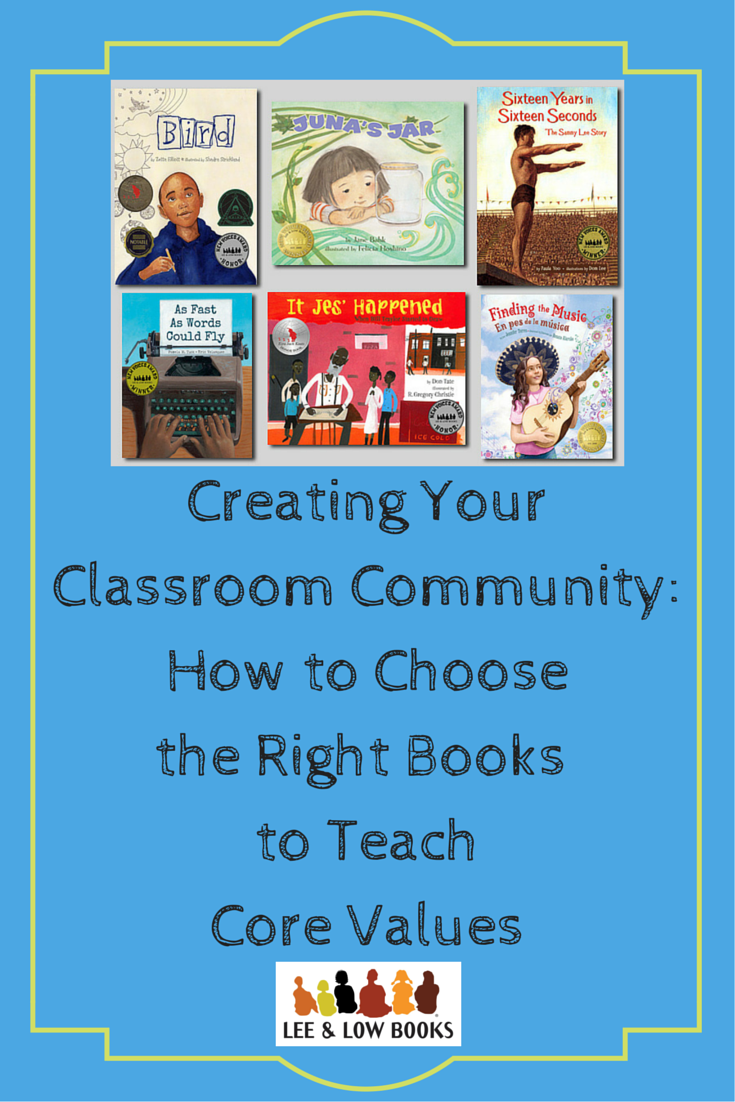 As we cluster in workshops, around webinars, and near the water cooler, we are already thinking about and preparing what skills and knowledge we want to teach. Yet, to truly have a successful year, let’s ponder an additional question: who do we want to teach?
As we cluster in workshops, around webinars, and near the water cooler, we are already thinking about and preparing what skills and knowledge we want to teach. Yet, to truly have a successful year, let’s ponder an additional question: who do we want to teach?
The start of school is a popular time to model and instill core values because August and September are a fresh start: our time as teachers, librarians, and administrators to create and cultivate a community bound and motivated by the same values and goals. It is during this period that we can expose our students to stories with strong morals that feature both examples and non-examples of how to react in tough situations and learn from one’s mistakes.
However, it can be very difficult to select just the right text to teach values that will guide our students through academic and developmental challenges over the coming year and lay the groundwork for the community we hope to build.
Many teachers dust off their tried-and-true character education read alouds each coming school year or rely on word of mouth recommendations that send us back to the classics year in, year out. During my first year of teaching, I remember everyone scrambling to find a book that demonstrated “respect” or “persistence.” When a master teacher on campus mentioned that she used a particular title for the start of every first week of school, that sounded like hard proof to me and I was grateful. I went out and bought it.
Yet, there is not just one book that will make the abstract concept of “empathy” or “leadership” concrete to third graders or kindergartners. With such dependence on the same books, many of my third graders had read The Lorax three years in a row to learn about responsibility and respect. It’s an outstanding book to explore these values, but still…three years? It was time to shake things up.
Whether your school has campus-wide core values or you can determine your own, I encourage you to think carefully about which books you use to teach core values. They are the foundation of a classroom or school’s culture and can guide children’s social, intellectual, and emotional development.
 For successful character education study, choose a set of books that:
For successful character education study, choose a set of books that:
1. Have protagonists that both exemplify and struggle with at least one of the classroom’s core values. Don’t just present stories with perfect, role model-worthy characters! Students should see multiple examples of people and situations of the core value in action to learn that one’s character is made, not born. Finding books where characters (protagonists and antagonists) lie, cheat, lose their cool, or are hurtful to other characters can be just as powerful as exemplary characters, if not more so. Students can discuss what they can learn from both examples and non-examples, share advice for different scenarios, and reflect on similar experiences in their lives where they struggled to make the right decision.
 2. Are both fiction and nonfiction. Pair fiction with nonfiction texts to show students a range of experiences and real world applications. Reading a biography of a famous leader practicing or struggling with a core value gives students the chance to visualize the core value in their environment and daily lives, as well as let them see that knowing how to make good choices doesn’t come naturally and needs to be practiced.
2. Are both fiction and nonfiction. Pair fiction with nonfiction texts to show students a range of experiences and real world applications. Reading a biography of a famous leader practicing or struggling with a core value gives students the chance to visualize the core value in their environment and daily lives, as well as let them see that knowing how to make good choices doesn’t come naturally and needs to be practiced.
3. Align with the Common Core ELA Standards. Character education doesn’t need to be separate from ELA instruction or your curriculum. In fact, core value study is great for teaching close reading, determining central ideas and author’s message, analyzing word choice, and comparing two or more texts.
4.  Have protagonists students can identify with based on race, gender, family background, language, and experience. Although students absolutely learn from characters different from themselves, it is very meaningful for children to see someone on the cover and in the pages they identify with struggling or succeeding to make good choices. Especially for younger students, relating to aspects of a character’s identity helps students visualize themselves in the character’s situation and develop empathy. Additionally, for children who are new to school or are English Language Learners, having characters that remind them of themselves or their families may give the children more confidence to participate in class, which is critical to building a strong classroom/school community at the beginning of the year.
Have protagonists students can identify with based on race, gender, family background, language, and experience. Although students absolutely learn from characters different from themselves, it is very meaningful for children to see someone on the cover and in the pages they identify with struggling or succeeding to make good choices. Especially for younger students, relating to aspects of a character’s identity helps students visualize themselves in the character’s situation and develop empathy. Additionally, for children who are new to school or are English Language Learners, having characters that remind them of themselves or their families may give the children more confidence to participate in class, which is critical to building a strong classroom/school community at the beginning of the year.
Looking to refresh your character education read aloud shelf? For book recommendations demonstrating your classroom’s core values, check out our Pinterest boards:

- Achievement and Value of Education
- Persistence and Grit
- Empathy and Kindness
- Responsibility
- Leadership
- Pride
- Collaboration and Teamwork
- Identity and Uniqueness
What core values do you teach children? What are your favorite books to teach these core values? Let us know below!
Jill Eisenberg, our Resident Literacy Expert, began her career teaching English as a Foreign Language to second through sixth graders in Yilan, Taiwan as a Fulbright Fellow. She went on to become a literacy teacher for third grade in San Jose, CA as a Teach for America corps member. She is certified in Project Glad instruction to promote English language acquisition and academic achievement. In her column she offers teaching and literacy tips for educators.


good ideas.